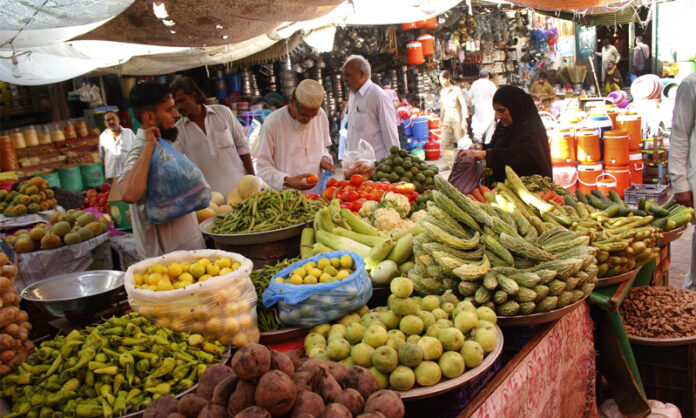ISLAMABAD: Inflation rose to 12.63 per cent on a year-on-year basis in December 2019, as compared to the same month of last year, the Pakistan Bureau of Statistics (PBS) reported on Wednesday.
Inflation, measured by the Consumer Price Index (CPI), however, dropped marginally by 0.4pc on a month-on-month basis, from 12.67pc in November 2019 to 12.63pc in December 2019.
The country’s annual inflation rate dropped slightly in December due to what the data shows, a decrease in some commodity prices.
As per the PBS, prices of food items including tomatoes, wheat, chicken, cooking oil, sugar, motor fuel and liquefied hydrocarbons, which make up a third of the overall basket used to calculate inflation, dropped during the month under review.
In line with the IMF’s claims that inflation has started stabilising, the government foresees a further downward trend in inflation during the coming months. IMF had lowered the inflation projection for the fiscal year 2020 from 13pc to 11.8pc on account of administrative and energy tariff adjustments that are expected to offset the effects from weak domestic demand. The finance ministry had also recently claimed that the country would do much better than IMF projections, saying that measures would be taken to bring inflation down to five per cent in the medium term.
According to the break-up figures, the urban CPI-based inflation increased by 12pc YOY, whereas it went down by 0.4pc MoM. On the other hand, rural CPI-based inflation increased 13.6pc YoY whereas it decreased by 0.3pc MoM.
Meanwhile, the Sensitive Price Indicator (SPI) witnessed an increase of 18.1pc YoY and a decrease of 2pc MoM. Likewise, the Wholesale Price Index (WPI) increased by 12.4pc YoY and witnessed a decrease of 0.3pc MoM.
During the month of December 2019, the core inflation measured by non-food non-energy (NFNE) urban CPI increased by 7.5pc YoY and 0.4pc MoM, whereas core inflation measured by NFNE rural CPI increased by 8.1pc YoY and 0.5pc MoM.
The top food commodities that witnessed increase in their prices on YoY basis included tomatoes (321.04pc), onions (169.45pc), fresh vegetables (83.59pc), potatoes(78.23pc), pulse moong (53.24pc), pulse mash (38.44pc), gur (31.22pc), sugar (27.81pc), wheat (21.68pc), cooking oil (16.67pc), vegetable ghee (16.39pc), wheat flour (15.8pc), pulse masoor (13.82pc), fish (13.64pc), meat (13.45pc), dry fruits(13.25pc), besan (11.96pc), beverages (11.1pc), pulse gram (11pc), beans (10.84pc), milk powder (10.64pc) and tea (10.21pc).
On the other hand, the non-food commodities that witnessed an increase in prices included gas charges (54.84pc), construction input items (18.51pc), motor fuel (17.95pc), electricity charges (17.57pc), motor vehicles (16.6pc), cotton cloth (12.49pc), transport services (11.89pc), doctor’s clinic fee (11.2pc), woollen cloth (10.44pc), and motor vehicle accessories (10.04pc).

























Population continues to rise despite all this so it’s clear Pakistanis can afford even higher inflation rates. Government should pump up the money creation rate! SBP should do more OMOs with newly made money so that commercial banks can lend the money back to the government.